When it comes to available construction materials, laminated veneer lumber, or LVL, is one of the most popular available options.
In short, LVL is an engineered wood product, made of several layers of thin wood held together with adhesive. LVL is often used for headers, rimboards, and roofs, but one of its most common applications is in beams.
LVL beams are a type of structural composite lumber (SCL), which all are created by layering and bonding sheets of veneers on top of one another. Others include laminated strand lumber (LSL) and parallel strand lumber (PSL), but what makes LVL so much more impressive than its peers? Let’s break down the ins and outs of the LVL beam:
How an LVL Beam is Made
The manufacturing process for an LVL beam begins in the log yard, after the trees have been cut to size. Then, a rotary peeling technique is used to cut thin layers of the bark off. Usually, these are between 2.5 mm to 4.8 mm thick, with an average of around 3.2 mm.
A pressure bar applies a set amount of pressure to the surface as a knife at a certain bevel angle—depending on the type of wood—slices a sheet from around the rotating log. The pressure of the pressure bar keeps the sheet a uniform thickness, and keeps it from cracking as the veneer is cut.
This veneer is then dried to eliminate excess moisture, graded, and trimmed, before finally being assembled. An LVL beam is created by using an adhesive like phenol formaldehyde, applied to each sheet as they are placed one on top of the other. Then, they are pressed at temperatures ranging from 250 to 450 degrees Fahrenheit.
What Are the Advantages of an LVL Beam
An LVL beam has several advantages that make it a popular option.
For one thing, it is an extremely versatile product, and can be used to create anything from headers and I-joists, to truck bed decking, roadway signposts, and even skateboards.
Another advantage of an LVL beam? The size. Because it is manufactured by pressing several layers of a veneer together, the size is not limited by the size of the log. In fact, the size is just one of many things that can be better controlled in LVL production. The way it is made gives you more control over the thickness, width, length, and moisture content.
LVL is also one of the strongest engineered-wood products around, making it a formidable opponent against wind and heavy loads. Plus, each layer of an LVL beam is checked for quality and selected for a cohesive product, making it easier to control the quality of the end result.
LVL is typically more cost effective than alternatives like sawn timber, too.
What Are the Disadvantages of an LVL Beam
There are some disadvantages to LVL beams, though. For instance, the multiple layers and lengthy production process can make it prone to warping, splitting, and delamination, especially if it is not stored properly.
The production process also requires significant investment upfront, thanks to the need for advanced production technology and an experienced and talented craftsman.
Common Types of Wood Used for LVL Beams
LVL beams are known for their versatility, and that goes for the materials with which they are made, as well. A variety of species can be used to create LVL beams, but some of the most popular are:
- Douglas-fir
- Larch
- Pine
- Spruce
- Poplar
- Acacia
- Eucalyptus
- Rubber
LVL Beams in Your Projects
If you are considering using LVL beams in your next project, but want some insight into the type and the most well-suited application of your pick, you can turn to Capitol City Lumber Co.. Our team has extensive knowledge to help guide you through the process, from choosing your wood to planning your project to installation.
For more information about our lumber yard and building supply store in Raleigh, shipping capabilities, wood cutting services, or items we sell, visit or contact us today. If you can’t swing by, check out the many wood products that we ship all over the continental U.S. through TotalWoodStore.com



